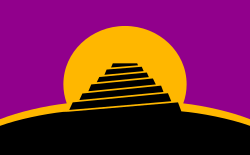Portal:Constructed languages
Introduction

A constructed language is a language for communication between humans (i.e. not with or between computers) but unlike a language that emerges from human interaction, is intentionally devised for a particular purpose. Constructed language is often shortened to conlang and is a relatively broad term that encompasses subcategories including: fictional, artificial, engineered, planned and invented. A constructed language may include natural language aspects including phonology, grammar, orthography, and vocabulary. Interlinguistics includes the study of constructed languages. (Full article...)
Selected language

The Logical Language Group (LLG) began developing Lojban in 1987. The LLG sought to realize Loglan's purposes, and further improve the language by making it more usable and freely available (as indicated by its official full English title, "Lojban: A Realization of Loglan"). After a long initial period of debating and testing, the baseline was completed in 1997, and published as The Complete Lojban Language. In an interview in 2010 with The New York Times, Arika Okrent, the author of In the Land of Invented Languages, stated: "The constructed language with the most complete grammar is probably Lojban—a language created to reflect the principles of logic."
Lojban is proposed as a speakable language for communication between people of different language backgrounds, as a potential means of machine translation and to explore the intersection of human language and software.
The name "Lojban" is a compound formed from loj and ban, which are short forms of logji (logic) and bangu (language). Find out more...
Did you know...
...that J.R.R. Tolkien originally created his Middle-earth merely as a background for his constructed languages?
...that the earliest known constructed language, Lingua Ignota, was created by Hildegard of Bingen, who also acquired fame as a mystic, visionary, and composer of music?
...that Ill Bethisad is an alternate history project that features dozens of constructed languages?
Current events
(none)
Projects

|
You are invited to participate in WikiProject Constructed languages, a WikiProject dedicated to developing and improving articles about constructed languages. |
Things you can do
-
Join: Constructed Languages WikiProject & add {{Wikipedia:WikiProject Constructed languages/Userbox}}
Follow: Recent changes in related articles
Tag: {{WP conlangs}}, {{Constructed languages}}, and {{Infobox language}} (see WP:CL Templates)
Evaluate: Everything in Category:Unassessed constructed language articles
Report: Edit wars and deletions
Expand: everything in category:Constructed language stubs
Requests:
-
Abakwi, Ancient Language, Arovën, Baza, Bluddian, Dremlang, Eaiea, Eloi, Ekspreso, Esperando, Fasile, Glide, Herman Miller, Language Creation Society, Latejami, Mezhdunarodny Nauchny Yazyk, Mirad, Modern Indo-European, Mondlango, Musbrek, Noxilo, Or'zet, Romanica (rd), Romanova (rd), Signuno, Sperethiel, Szkev, Tceqli/Ceqli, Thosk, Tokcir, Troscann, Unas, UNI, Universalspråket, Vorlin.
Web resources

Some Internet resources relating to constructed languages, by Richard Kennaway
UniLang.org
Conlang wiki
Articles
Wikipedia in constructed languages
Associated Wikimedia
The following Wikimedia Foundation sister projects provide more on this subject:
-
Commons
Free media repository -
Wikibooks
Free textbooks and manuals -
Wikidata
Free knowledge base -
Wikinews
Free-content news -
Wikiquote
Collection of quotations -
Wikisource
Free-content library -
Wikiversity
Free learning tools -
Wiktionary
Dictionary and thesaurus













